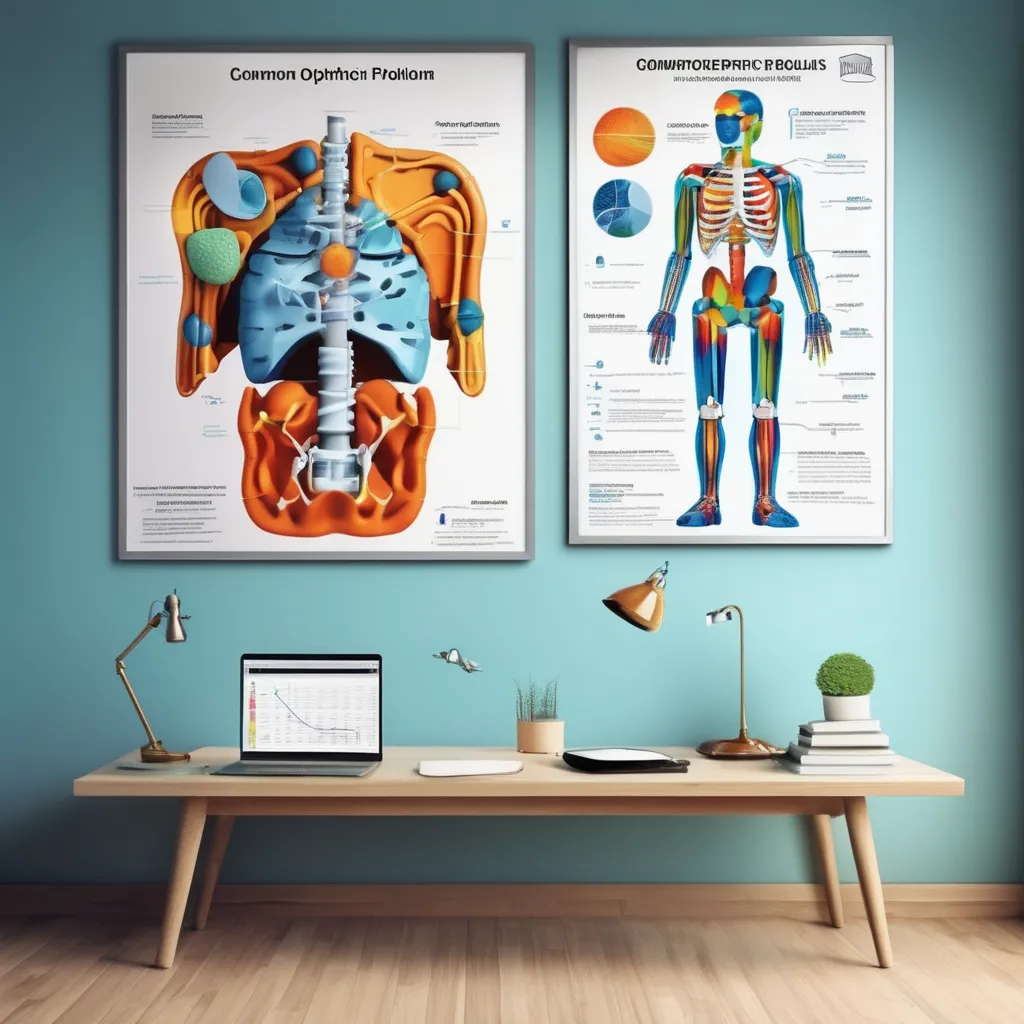Osteoarthritis | Rotator Cuff Injuries | Plantar Fasciitis | Carpal Tunnel Syndrome | Herniated Disc | Tennis Elbow | Advise | Conclusion
Let’s face it, whether you’re running, sitting at a desk, or just doing daily chores, you’ve probably felt some discomfort in your joints, back, or neck at some point. These aches and pains can be more than just annoying—they could be signs of an orthopedic issue. But don’t worry! In this post, we’ll go over six of the most common orthopedic problems and some easy, practical solutions to help you feel better.
1. Osteoarthritis: The Creaky Joints You Can’t Ignore
Ever feel like your knees or hips are making more noise than usual? You’re not alone! Osteoarthritis is super common, especially as we age. It’s basically “wear and tear” on your joints. Think of it as your body’s shock absorbers losing their bounce over time.
For Example:
Remember that feeling when you kneel down to tie your shoes, and suddenly your knees are screaming? That could be osteoarthritis.
What You Can Do:
- Gentle exercise like walking, swimming, or biking is your best friend. It helps keep your joints moving without stressing them.
- Lose a few pounds: Even dropping a little weight takes a ton of pressure off your joints.
- Braces and supports can give you extra stability when you’re on the move.
2. Rotator Cuff Injuries: Ouch, My Shoulder!
Do you ever reach up to grab something off a shelf and feel that pinch in your shoulder? That could be your rotator cuff talking. These injuries are common in athletes and active people, but you can also get them from everyday tasks like gardening or even reaching into the back seat of your car.
For Example:
Let’s say you love playing tennis on weekends, but now your shoulder aches every time you serve. Or maybe you’re just cleaning the garage, and suddenly your arm says, “Nope!”
What You Can Do:
- Rest up! Give your shoulder time to heal.
- Physical therapy can help strengthen the muscles around the shoulder and get you back in action.
- If the pain persists, you might need surgery—but don’t worry, it’s usually a minimally invasive fix.
3. Plantar Fasciitis: The Heel Pain that Won’t Quit
If you’ve ever woken up with stabbing pain in your heel that makes you hobble to the bathroom, you might be dealing with plantar fasciitis. It’s caused by inflammation in the thick band of tissue running along the bottom of your foot—usually from standing too much or wearing shoes that don’t support your feet.
For Example:
Maybe you’ve just started jogging again, and suddenly your heel hurts like crazy when you take your first step in the morning. Or perhaps you’re on your feet all day at work, and your heels are paying the price.
What You Can Do:
- Stretch your feet: A few gentle stretches in the morning can work wonders.
- Use orthotic insoles: Slip these into your shoes to give your heels extra cushioning.
- Take it easy: Rest your feet and avoid activities that make the pain worse.
4. Carpal Tunnel Syndrome: Hands That Go Numb
We all spend way too much time on our computers and phones, and that can lead to carpal tunnel syndrome—a condition where the median nerve in your wrist gets pinched. You might feel tingling, numbness, or weakness in your hands.
For Example:
Picture this: You’re typing away at your desk, and suddenly your fingers feel numb, like they’ve fallen asleep. Or maybe you’re holding your phone, and your hand just can’t grip like it used to.
What You Can Do:
- Wrist splints: These can help take the pressure off your nerves, especially if you wear them at night.
- Adjust your workspace: Make sure your keyboard and mouse are in a position that doesn’t strain your wrist.
- In more severe cases, minor surgery can relieve the pressure on your nerves.
5. Herniated Disc: Back Pain That Stops You in Your Tracks
If you’ve ever bent down to pick up something heavy and suddenly felt a sharp pain in your back, you might have experienced a herniated disc. This happens when one of the cushions between your spinal bones slips out and presses on nearby nerves.
For Example:
You decide to rearrange your living room, but after moving the couch, your lower back is screaming in pain. Or maybe you’re just bending over to tie your shoes, and your back seizes up.
What You Can Do:
- Core-strengthening exercises can help take the strain off your spine.
- Chiropractic adjustments or physical therapy can realign your back and relieve the pressure.
- Sometimes, surgery might be needed, but it’s usually a last resort if other treatments don’t help.
6. Tennis Elbow: Not Just for Tennis Players
Tennis elbow happens when the tendons in your elbow get overworked from repetitive motions, like playing sports or even painting the house. It’s not just for tennis players—anyone who uses their arms a lot can get it.
For Example:
Maybe you’ve been spending weekends painting your new house, and now your elbow aches every time you lift a paintbrush. Or you love to play golf, but now your swing sends pain shooting up your arm.
What You Can Do:
- Rest your elbow and avoid activities that aggravate it.
- Strengthening exercises can help relieve the stress on your tendons.
- In more stubborn cases, corticosteroid injections can reduce inflammation.
How to Keep Your Body Happy and Pain-Free
Orthopedic problems can sneak up on anyone, but you can prevent or manage them with some simple lifestyle changes:
- Stay Active: Regular exercise, like walking or swimming, keeps your joints and muscles strong and flexible.
- Watch Your Weight: Keeping your weight in check takes pressure off your joints.
- Wear the Right Shoes: Proper footwear, especially for your day-to-day activities, can prevent foot and back problems.
- Take Breaks: If you’re working at a desk or doing repetitive movements, take regular breaks to stretch and move around.
Key Takeaways:
- Osteoarthritis is common as we age, but exercise and weight management can help reduce pain.
- Rotator cuff injuries affect athletes and weekend warriors alike, and rest and therapy are crucial to recovery.
- Plantar fasciitis is a common foot issue, but stretches and insoles can help ease the pain.
- Carpal tunnel syndrome is often caused by repetitive movements, but splints and ergonomic changes can offer relief.
- Herniated discs can cause severe back pain, but strengthening your core can make a huge difference.
- Tennis elbow affects more than just tennis players—rest and physical therapy can help you get back to your normal activities.

